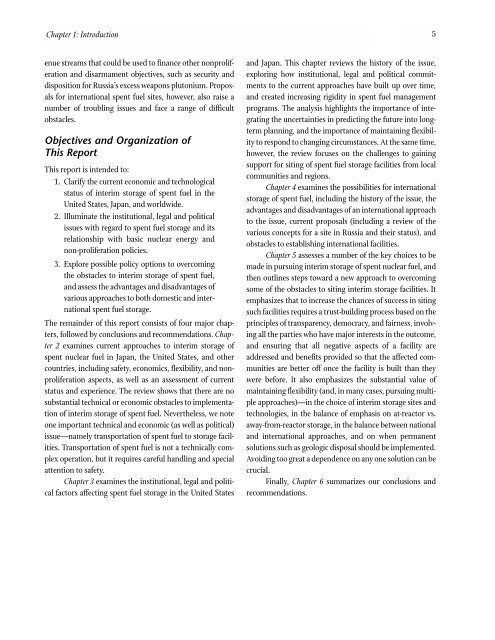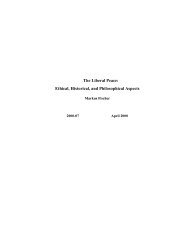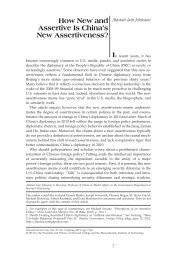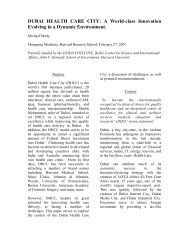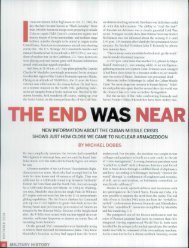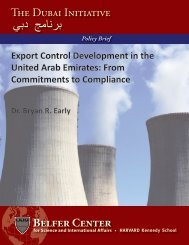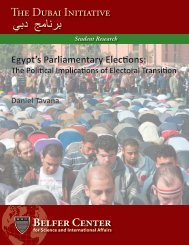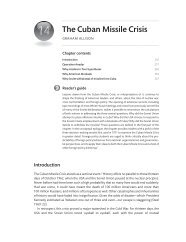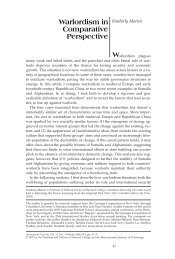Interim Storage of Spent Nuclear Fuel - Woods Hole Research Center
Interim Storage of Spent Nuclear Fuel - Woods Hole Research Center
Interim Storage of Spent Nuclear Fuel - Woods Hole Research Center
Create successful ePaper yourself
Turn your PDF publications into a flip-book with our unique Google optimized e-Paper software.
Chapter 1: Introduction 5<br />
enue streams that could be used to finance other nonproliferation<br />
and disarmament objectives, such as security and<br />
disposition for Russia’s excess weapons plutonium. Proposals<br />
for international spent fuel sites, however, also raise a<br />
number <strong>of</strong> troubling issues and face a range <strong>of</strong> difficult<br />
obstacles.<br />
Objectives and Organization <strong>of</strong><br />
This Report<br />
This report is intended to:<br />
1. Clarify the current economic and technological<br />
status <strong>of</strong> interim storage <strong>of</strong> spent fuel in the<br />
United States, Japan, and worldwide.<br />
2. Illuminate the institutional, legal and political<br />
issues with regard to spent fuel storage and its<br />
relationship with basic nuclear energy and<br />
non-proliferation policies.<br />
3. Explore possible policy options to overcoming<br />
the obstacles to interim storage <strong>of</strong> spent fuel,<br />
and assess the advantages and disadvantages <strong>of</strong><br />
various approaches to both domestic and international<br />
spent fuel storage.<br />
The remainder <strong>of</strong> this report consists <strong>of</strong> four major chapters,<br />
followed by conclusions and recommendations. Chapter<br />
2 examines current approaches to interim storage <strong>of</strong><br />
spent nuclear fuel in Japan, the United States, and other<br />
countries, including safety, economics, flexibility, and nonproliferation<br />
aspects, as well as an assessment <strong>of</strong> current<br />
status and experience. The review shows that there are no<br />
substantial technical or economic obstacles to implementation<br />
<strong>of</strong> interim storage <strong>of</strong> spent fuel. Nevertheless, we note<br />
one important technical and economic (as well as political)<br />
issue—namely transportation <strong>of</strong> spent fuel to storage facilities.<br />
Transportation <strong>of</strong> spent fuel is not a technically complex<br />
operation, but it requires careful handling and special<br />
attention to safety.<br />
Chapter 3 examines the institutional, legal and political<br />
factors affecting spent fuel storage in the United States<br />
and Japan. This chapter reviews the history <strong>of</strong> the issue,<br />
exploring how institutional, legal and political commitments<br />
to the current approaches have built up over time,<br />
and created increasing rigidity in spent fuel management<br />
programs. The analysis highlights the importance <strong>of</strong> integrating<br />
the uncertainties in predicting the future into longterm<br />
planning, and the importance <strong>of</strong> maintaining flexibility<br />
to respond to changing circumstances. At the same time,<br />
however, the review focuses on the challenges to gaining<br />
support for siting <strong>of</strong> spent fuel storage facilities from local<br />
communities and regions.<br />
Chapter 4 examines the possibilities for international<br />
storage <strong>of</strong> spent fuel, including the history <strong>of</strong> the issue, the<br />
advantages and disadvantages <strong>of</strong> an international approach<br />
to the issue, current proposals (including a review <strong>of</strong> the<br />
various concepts for a site in Russia and their status), and<br />
obstacles to establishing international facilities.<br />
Chapter 5 assesses a number <strong>of</strong> the key choices to be<br />
made in pursuing interim storage <strong>of</strong> spent nuclear fuel, and<br />
then outlines steps toward a new approach to overcoming<br />
some <strong>of</strong> the obstacles to siting interim storage facilities. It<br />
emphasizes that to increase the chances <strong>of</strong> success in siting<br />
such facilities requires a trust-building process based on the<br />
principles <strong>of</strong> transparency, democracy, and fairness, involving<br />
all the parties who have major interests in the outcome,<br />
and ensuring that all negative aspects <strong>of</strong> a facility are<br />
addressed and benefits provided so that the affected communities<br />
are better <strong>of</strong>f once the facility is built than they<br />
were before. It also emphasizes the substantial value <strong>of</strong><br />
maintaining flexibility (and, in many cases, pursuing multiple<br />
approaches)—in the choice <strong>of</strong> interim storage sites and<br />
technologies, in the balance <strong>of</strong> emphasis on at-reactor vs.<br />
away-from-reactor storage, in the balance between national<br />
and international approaches, and on when permanent<br />
solutions such as geologic disposal should be implemented.<br />
Avoiding too great a dependence on any one solution can be<br />
crucial.<br />
Finally, Chapter 6 summarizes our conclusions and<br />
recommendations.


